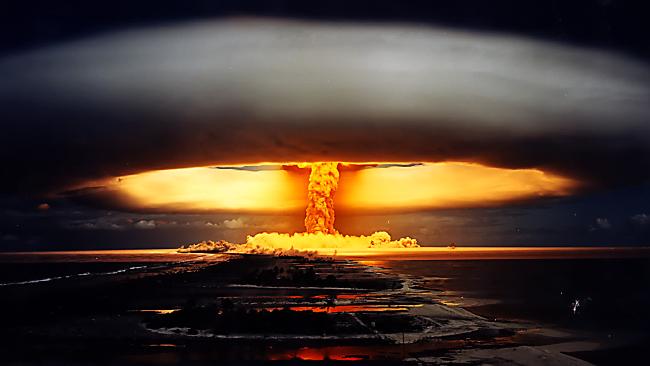After the Iran Agreement: How Close Are We to “a World Free of Nuclear Weapons?”
WEAPONS OF MASS DESTRUCTION, 25 Jan 2016
Amb. Sergio Duarte – TRANSCEND Media Service
The start of the implementation of the agreement promoted by six nations (five of which possess nuclear weapons) plus the European Union with the Islamic Republic of Iran was received by public opinion worldwide as a major contribution to the prevention of the further proliferation of nuclear weapons. Its effect on progress toward the achievement of the objective of a world free of nuclear weapons, however, remains in doubt.
The Joint Comprehensive Program of Action (JCPOA), as it is officially known, represents indeed a landmark in the effort to curb the spread of weapons of mass destruction, particularly nuclear weapons. For the first time in the history of the nuclear age crippling economic sanctions were applied by a group of like-minded nations in order to obtain what for several years seemed an elusive agreement on drastic and unprecedented restrictions to a non-nuclear weapon State’s nuclear program. The JCPOA removed – at least temporarily – an important source of tension between the United States and Iran, as shown by recent goodwill gestures by both countries toward each other, although other bilateral disagreements persist. However, while the JCPOA made Iran’s development of a nuclear weapon in the foreseeable future less likely, it may increase fears from States in the Middle East about the renewed political, economic and military influence of the Islamic Republic. Some Middle Eastern States already voiced concern. It is perhaps too early to say that stability in the region has been enhanced as a result of the agreement.
It is may also be too early to say that the world has become a safer place, as President Obama optimistically stated. Unfortunately, the prospects for meaningful progress toward nuclear disarmament are still bleak and all nuclear weapon States continue to adhere to military doctrines that contemplate the use of nuclear weapons as they see fit. The JCPOA is undoubtedly a victory for non-proliferation advocates, but the current possessors of nuclear weapons do not seem willing to apply the same logic to their own continuing programs of increase and “modernization” of their arsenals and point to the technological advancement of their rivals in order to justify their own military efforts. The nuclear arms race takes on new forms as bombs become smaller, lighter and smarter, confirming former United States Defense Secretary William Perry’s dire prediction about a resumption of the nuclear arms race.
Proliferation no longer seems only a matter of the increase in the number of nuclear-capable States, but rather the rapid technological improvement of the arsenals of States that already have developed a nuclear capability. Possessors of nuclear weapons are pondering the implications of the recent test of the B-61 Model 12, a smaller precision-guided atom bomb by the United States. Moscow called those tests “irresponsible” and “openly provocative”, hinting at retaliatory moves. Some experts point out that smaller yields and better targeting can make the weapons more tempting to use. On January 11 the New York Times quoted General James Cartwright, a retired vice-chairman of the Joint Chiefs of Staff, as saying that “going smaller means making the weapon more thinkable”. Conversely, nuclear weapon “modernization” programs in Russia and China raise concerns of strategic planners in Washington.
For his part, the Russian president has repeatedly warned: “Do not forget that Russia is a nuclear power”. China is adding a ballistic missile nuclear submarine arsenal to its expanding sea-based force and extending the range of its ICBMs. At the same time, the Democratic People’s Republic of Korea announced the test detonation of a hydrogen bomb allegedly to counter “the ever-growing nuclear threat by the United States”. Tensions in Northeast Asia increased as a result of the technological breakthrough claimed by the DPRK. The fragile balance in Russia-United States and China-United States relations and its reflections in the European and Asian scenarios are also affected by the impending new technological round of the arms race, making ever more distant the avowed goal of a world free of nuclear weapons.
These developments are not reassuring to the international community and particularly to the overwhelming majority of nations that have abided faithfully to the commitment not to acquire nuclear weapons enshrined 46 years ago in the Treaty on the Non-proliferation of Nuclear Weapons (NPT). These countries still await the fulfilment of the promise of nuclear disarmament contained in Article VI of that instrument.
__________________________________________
Sergio Duarte – Brazilian Ambassador, former United Nations High Representative for Disarmament Affairs.
This article originally appeared on Transcend Media Service (TMS) on 25 Jan 2016.
Anticopyright: Editorials and articles originated on TMS may be freely reprinted, disseminated, translated and used as background material, provided an acknowledgement and link to the source, TMS: After the Iran Agreement: How Close Are We to “a World Free of Nuclear Weapons?”, is included. Thank you.
If you enjoyed this article, please donate to TMS to join the growing list of TMS Supporters.

This work is licensed under a CC BY-NC 4.0 License.
Read more
Click here to go to the current weekly digest or pick another article:
WEAPONS OF MASS DESTRUCTION:
